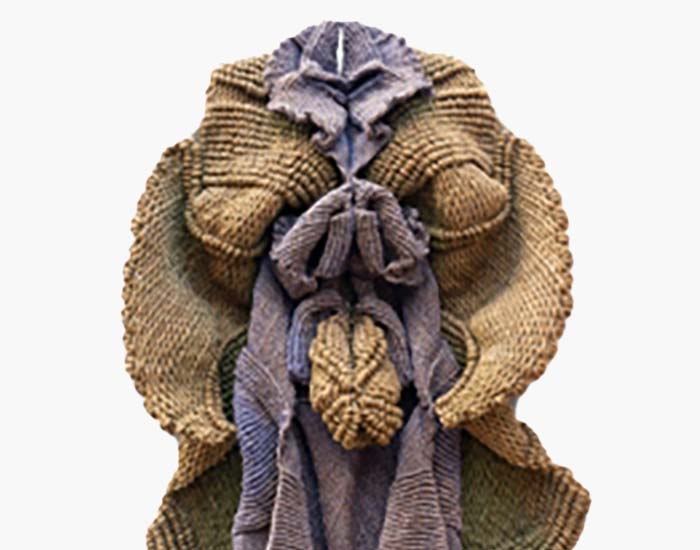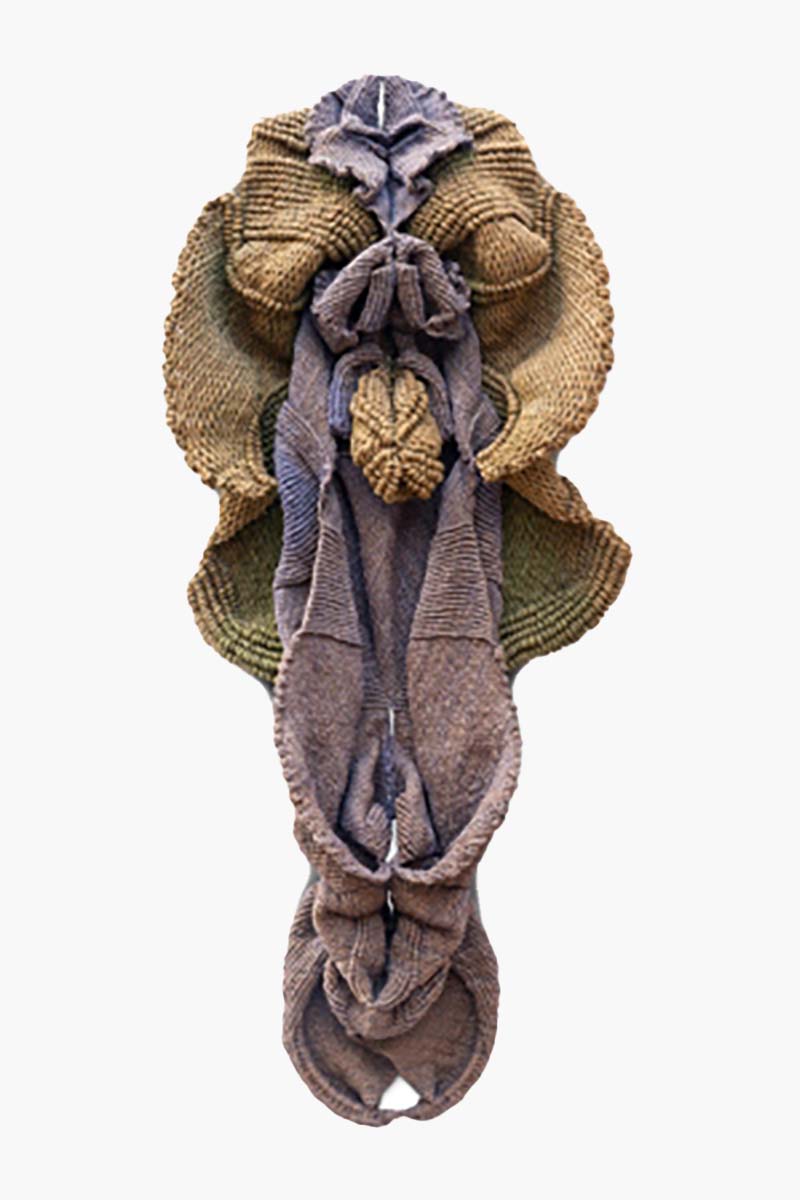Encyclopedia of Art > Articles
Mrinalini Mukherjee

A sculptor renowned for her use of fibre and bronze to create large, totemic figures and organic forms, Mrinalini Mukherjee used naturalistic symbolism to depict processes that are usually considered disturbing or unusual. Her work prioritises the chaos and unsettling aspects of the natural world while remaining grounded in the tenets of classical sculpture, such as balance, volume and symmetry. She also drew inspiration from temple sculptures and carvings, although she did not incorporate recognisable religious imagery in her finished works.
Mukherjee was born in Bombay (now Mumbai) to artists Benode Behari and Leela Mukherjee and grew up in Dehradun and Shantiniketan, where her father taught at Visva Bharati. She enrolled at the Faculty of Fine Arts, MS University in Baroda (now Vadodara) in 1965 for her Bachelor’s in painting, followed by a diploma in mural design between 1970–72. During this period, she was taught by KG Subramanyan, who encouraged her to experiment with existing Indian craft traditions and materials, which she was introduced to at university-organised craft fairs in Baroda. It was there that she was also introduced to working with fibre.
After obtaining her degree, she moved to New Delhi and married Ranjit Singh. In Delhi, she was introduced to Jagdish Swaminathan, whose study of indigenous iconography significantly influenced Mukherjee’s work. In 1971, she received a British Council Scholarship for sculpture and worked at the West Surrey College of Art and Design until 1978.
Upon her return to India, she continued making elaborate sculptures made of natural fibres such as jute, hemp and cotton and coloured using deep organic dyes. Mukherjee also abandoned the practice of making preparatory sketches and worked on the final piece directly, which afforded her greater scope for spontaneity. She preferred knotting the fibres by hand and fixing the ropes to an armature rather than using a loom. Over time, her works became denser, more colourful and featured internal folds and layers.
Mukherjee’s early sculptures were hung against walls, as in Squirrel (1972) and Nag Devta I (1979), while later works were suspended from the ceiling, and finally, by the late-1980s, she began making free-standing sculptures, such as Yogini (1986). These pieces, although inspired by temple carvings and named after figures from Hindu mythology, are not depictions of Hindu deities; instead, they are abstract forms with briefly recognisable features, such as large leaves, flesh and robes, limb- or branch-like appendages, human proportions and lateral symmetry. Coupled with the use of vibrant organic dyes, the resulting work is marked by nature symbolism, implicit sexuality and Hindu iconography. However, by the mid-1990s, Mukherjee abandoned this practice due to the decreasing availability of pure organic fibres and a ban on her favoured dyes.
She soon shifted her focus to ceramics, which led to notable experiments such as Lotus Pond (1995), for which she used an iridescent glaze on a composite terracotta structure to lend the work an organic form. However, by the 2000s, this practice came to a halt owing to the lack of suitable facilities.
Mukherjee remained largely committed to one medium at any given time, embarking on a new medium only after exhausting the possibilities of the first. From the early-2000s onwards, she began working with bronze. While these works appear very different from her more recognised fibre figures, they draw from the same observation of nature and express the dual sense of vitality and mysticism. Rendered in the lost wax process of bronze casting, these works were not figural but suggest organic processes and mythical bodies comprising wing-like parts, scaly surfaces and vegetal forms.
Mukherjee gained international recognition before becoming an established figure in India. Her works have been shown at major exhibitions, including the National Exhibition at the Lalit Kala Akademi, New Delhi (1977); the Paris Biennale (1980); the Museum of Modern Art, Oxford (1994); Nature Morte (2001, 2013); the National Gallery of Modern Art (NGMA), New Delhi (2015); and the Metropolitan Museum of Art, New York (2019). Her work is part of the permanent collections of NGMA; the Museum of Modern Art, Oxford; Tate Modern, London; and the Museum of Modern Art, New York.
She died in 2015 in New Delhi.
First Published: April 21, 2022
Last Updated: July 26, 2023


